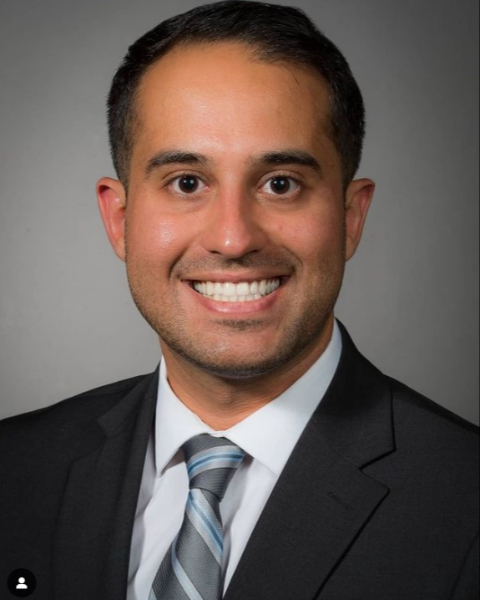PQA 08 - PQA 08 Genitourinary Cancer, Patient Safety, and Nursing/Supportive Care Poster Q&A
3251 - Treatment Terminations in Gynecological Malignancies
Tuesday, October 1, 2024
2:30 PM - 3:45 PM ET
Location: Hall C
Screen: 33

Jason Nosrati, MD
Montefiore Einstein Cancer Center
Bronx, NY
Presenter(s)
J. D. Nosrati1,2, N. Wasif1,2, B. F. Bloom1,2, A. Hassan3, B. S. Chitti1,2, P. Bhupesh1,2, L. Potters1,4, and W. C. Chen1,5; 1Northwell, New Hyde Park, NY, 2Department of Radiation Medicine, Lake Success, NY, 3Department of Radiation Medicine, Northwell Health Cancer Institute, Lake Success, NY, 4Department of Radiation Medicine, Northwell, New York, NY, 5Department of Radiation Medicine, Northwell, Bayshore, NY
Purpose/Objective(s): Disruptions in radiation therapy can be potentially detrimental to outcomes, and may occur for various predictable and unpredictable factors. Reasons for treatment disruptions have not been well reported. Current nationwide quality improvement projects are exploring reasons for breaks in radiation therapy. We report our large multi-center departmental experience regarding the discontinuation of radiation in gynecological malignancies. Materials/
Methods: A treatment termination (TT) was defined as the discontinuation of radiation therapy at any point following consent and treatment planning. TTs were prospectively tracked between 1/2013 and 12/2022 as part of departmental quality and safety monitoring. Categories of TT were defined as: Toxicity-related Patient Decision (PD), Nontoxicity-related PD, Toxicity-related Clinician Decision (CD), Nontoxicity-related CD, Disease Progression, Hospice/Expired, COVID-19, and Unknown/Other.
Results: A total of 120 gynecological TTs were identified. Mean age was 69 years (IQR 58-81). Eighty patients were simulated with curative intent, and the top reasons for termination were Nontoxicity-related PD (34 patients, 43%), Disease Progression (12 patients, 15%), and Patient Expired (9 patients, 12%); 7 patients terminated due to treatment-related toxicity. Majority of nontoxicity-related PD terminations (31/34, 91%) were due to patients declining therapy against medical recommendation, while 2 discontinued care due to progression or complications of comorbid diseases resulting in hospitalization. Forty patients were simulated with palliative intent, with 23 patients discontinuing due to further disease progression, transition to hospice, or death. Nine patients were electively terminated for nontoxicity-related decisions.
Conclusion: Few patients undergoing curative-intent radiation treatments for gynecologic malignancies discontinued due to radiation toxicities. Rather, a significant proportion elected to discontinue care against medical advice. A variety of barriers to medical care exist beyond toxicities. Future studies are needed to better understand these reasons for discontinuing care, and whether some barriers may be modifiable.
Purpose/Objective(s): Disruptions in radiation therapy can be potentially detrimental to outcomes, and may occur for various predictable and unpredictable factors. Reasons for treatment disruptions have not been well reported. Current nationwide quality improvement projects are exploring reasons for breaks in radiation therapy. We report our large multi-center departmental experience regarding the discontinuation of radiation in gynecological malignancies. Materials/
Methods: A treatment termination (TT) was defined as the discontinuation of radiation therapy at any point following consent and treatment planning. TTs were prospectively tracked between 1/2013 and 12/2022 as part of departmental quality and safety monitoring. Categories of TT were defined as: Toxicity-related Patient Decision (PD), Nontoxicity-related PD, Toxicity-related Clinician Decision (CD), Nontoxicity-related CD, Disease Progression, Hospice/Expired, COVID-19, and Unknown/Other.
Results: A total of 120 gynecological TTs were identified. Mean age was 69 years (IQR 58-81). Eighty patients were simulated with curative intent, and the top reasons for termination were Nontoxicity-related PD (34 patients, 43%), Disease Progression (12 patients, 15%), and Patient Expired (9 patients, 12%); 7 patients terminated due to treatment-related toxicity. Majority of nontoxicity-related PD terminations (31/34, 91%) were due to patients declining therapy against medical recommendation, while 2 discontinued care due to progression or complications of comorbid diseases resulting in hospitalization. Forty patients were simulated with palliative intent, with 23 patients discontinuing due to further disease progression, transition to hospice, or death. Nine patients were electively terminated for nontoxicity-related decisions.
Conclusion: Few patients undergoing curative-intent radiation treatments for gynecologic malignancies discontinued due to radiation toxicities. Rather, a significant proportion elected to discontinue care against medical advice. A variety of barriers to medical care exist beyond toxicities. Future studies are needed to better understand these reasons for discontinuing care, and whether some barriers may be modifiable.
